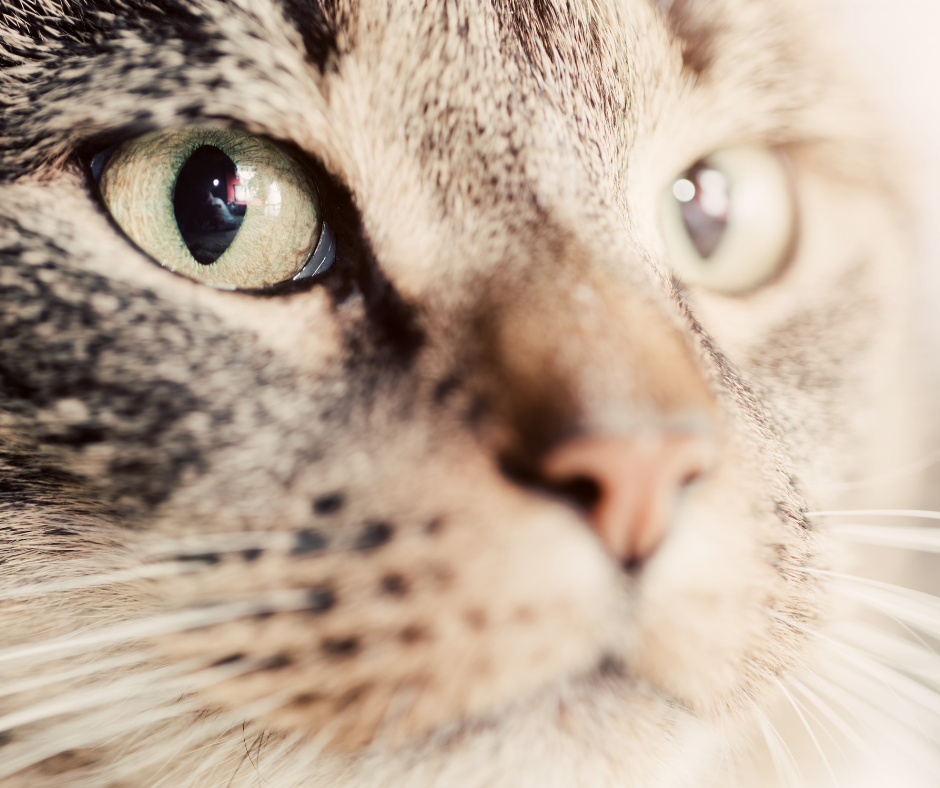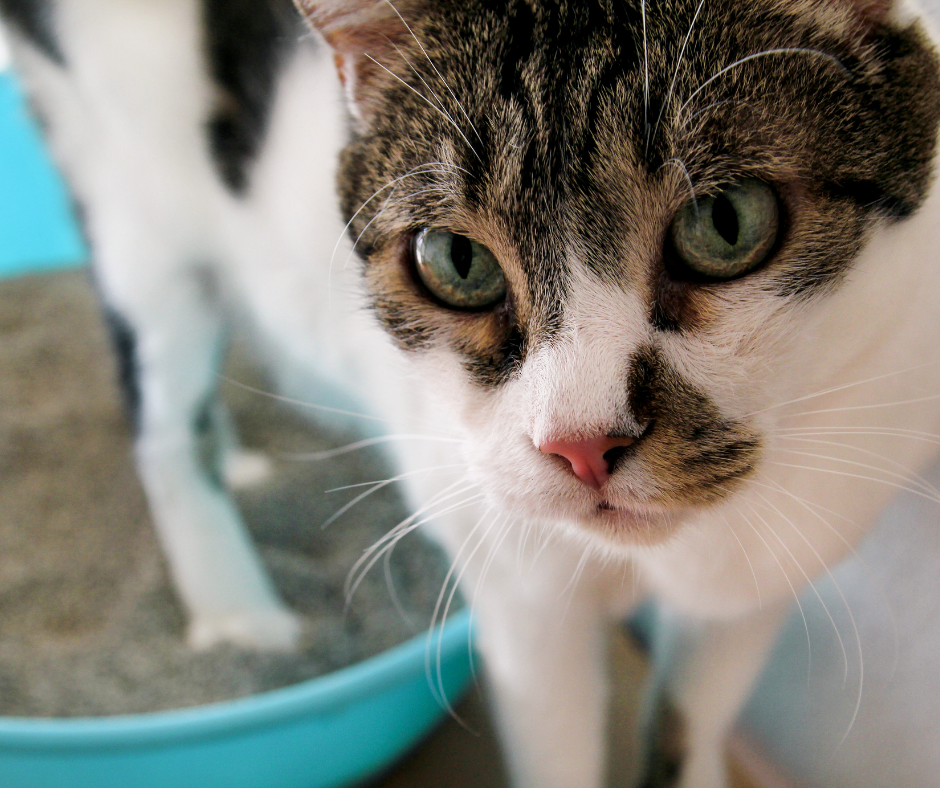and how to help your moggie feel more relaxed.
As restrictions ease life is changing for all of us and that includes our felines! With many of us going back to work, our cats will have to adapt to a new routine and, being creatures of habit, many moggies will find all this change a little scary. This article has been written to help you identify signs of stress in your cat, as well as the things you can do to help them to stay happy and relaxed even during the most challenging of times.🐱
What makes a cat feel stressed?
Unfortunately, cats can be very pernickety creatures, which means that lots of different things can make them worry. Changes to your daily routine, new people (such as builders) coming into their house as well as encountering other cats (whether this is another pet who lives with them, or a feline they’ve come across in the garden) can all stress your cat out.
But don’t fret. Even though cats may become anxious because of many different things, there are lots of different ways to help to bring your cat’s stress levels right back down again- and we’ll be going through these later.
Signs of cat stress
Cats can be very secretive animals and will often hide away when they are feeling scared or unhappy which can make it very difficult for owners to identify when something isn’t right. On top of this, even if your moggie doesn’t hide away when they’re stressed, the other signs are often very subtle too.
That being said, it’s still important to always look out for signs of cat stress which can include:
- Flattening ears down
- Wide eyes and large pupils
- Running away and/or hiding
- Back-arching and tensing
- Not wanting affection or not wanting to play as normal
- Signs of aggression which can include yowling, hissing or trying to bite and scratch (these are defence mechanism behaviours that cats sometimes show when they’re feeling threatened)

Cat pee and stress
If you notice your cat is peeing more frequently, is struggling to pee, or has started peeing blood (when the urine becomes pink-tinged or red) these can all be signs of stress. Also, if you notice you cat keeps peeing in the same spot, this can also be a sign that they may be feeling worried.
The signs listed above can be associated with feline idiopathic cystitis (FIC), a painful urinary condition where the bladder become inflamed. The exact cause of FIC is unknow but there is thought to be a strong link between FIC and stress.
Below is a list of all the different factors that are thought to contribute to the disease:
- Neurogenic inflammation: which is where nerves in the bladder wall become stimulated either by local irritation or by stimulation via the brain. This stimulation of the bladder lining leads to inflammation and pain.
- Defective bladder lining: which means that the bladder wall may not be properly protected and ulceration, inflammation and pain may be more likely to develop.
- Abnormal stress response: stress is though to be one of the main causes of FIC, but some cats also seem to have an abnormal or exaggerated response to stress. This may mean that changes to the bladder lining that are triggered by stress may also be more pronounced in some individuals.
If you see any signs of FIC always contact your vet for more advice.
How often should a cat pee?
If you are concerned about cystitis, it’s important to monitor how often your cat pees and how much urine they pass- although this can be tricky if your cat pees outside. When you monitor your cat’s urination, it’s important to be aware that this may make your cat feel uncomfortable, and watching them may make them feel even more stressed and worsen their cystitis- so always make sure you are as discrete as possible!
Also bear in mind that how much and how often your cat urinates will vary depending on age, how much they drink, time of year, and many other factors. That being said, on average cats will normally pee 2-4 times daily, so if your cat is peeing a lot more than that, or is only passing very small amounts of urine, it’s time to speak to your vet.
Blocked bladders
Blocked bladders are a condition that occur almost exclusively in male cats. The affected cat’s bladder normally becomes blocked as a result of a urinary stone, which becomes lodged in the tube that the cat normally pees through. And the condition can also, more rarely, be a result of FIC, which can lead to inflammation and spasm of the tube- again preventing urine from passing normally.
This dangerous blockage of urinary flow, means that the affected cat won’t be able to pass the toxins in their wee as they would normally, and these will start to build up in the cat’s body.
A blocked bladder is a very serious emergency condition and must be identified as early as possible. Some of the important signs to look out for are:
- Hiding away
- Straining to urinate and either no urine passing or only small amounts of urine passing
- Not urinating at all
- Blood or urine dribbling from the back end
- Not wanting to eat
- Tiredness and not wanting to play
- Pain when the belly is touched (cat may yowl or show signs of aggression)
If you see any of these signs or are suspicious your cat may have a urinary problem, it’s really important to contact a vet straight away, as it could be an emergency.

Can cats have anxiety?
The answer is yes. Just like us hoomins, cats can experience feelings of anxiety and some individuals will be more prone to this than others.
In terms of what triggers anxiety in cats, it’s important to note that, unlike dogs, cats don’t tend to get attached to their owners in the same way, meaning you are far less likely to find a cat with separation anxiety.
How to make a cat less stressed
The important thing to remember is that, whilst change is necessary, there are lots of things you can do to anticipate and alleviate situations that your moggie may find stressful.
For example, if you’re planning on having builders in the house, try to section off areas where your cat can be away from the noise and commotion, and provide plenty of hiding places (such as small carboard boxes placed up high) so your cat has their own space where they can feel safe. Or if you are introducing a new pet into the house, make sure you prepare and do your research as much as possible to try and make the process as stress-free as possible for your existing moggie (and you can find more information about introducing a new cat here).
There are also pheromone-releasing sprays and plugins which will release chemicals that can help your pet to feel content and relaxed. These products are not only great for day-to-day use, they can also be used when you think your cat may be becoming stressed.
If you have done all of the above, and you’re still finding your cat is not quite right, or if they are actively showing signs of stress, be sure to speak with a veterinary professional for further advice.
Leaving cat home alone
As we’ve mentioned previously, cats don’t rely on their owners in the same way dogs do. That being said, it’s still important to remember not to leave young cats and kittens unsupervised for long periods of time, as they may start to stray away from home or hurt themselves. And if you’ve been spending a lot of time at home with your feline, make sure you separate gradually when you start leaving your cat home alone again to try and avoid upsetting their daily routine- something they may find stressful.


